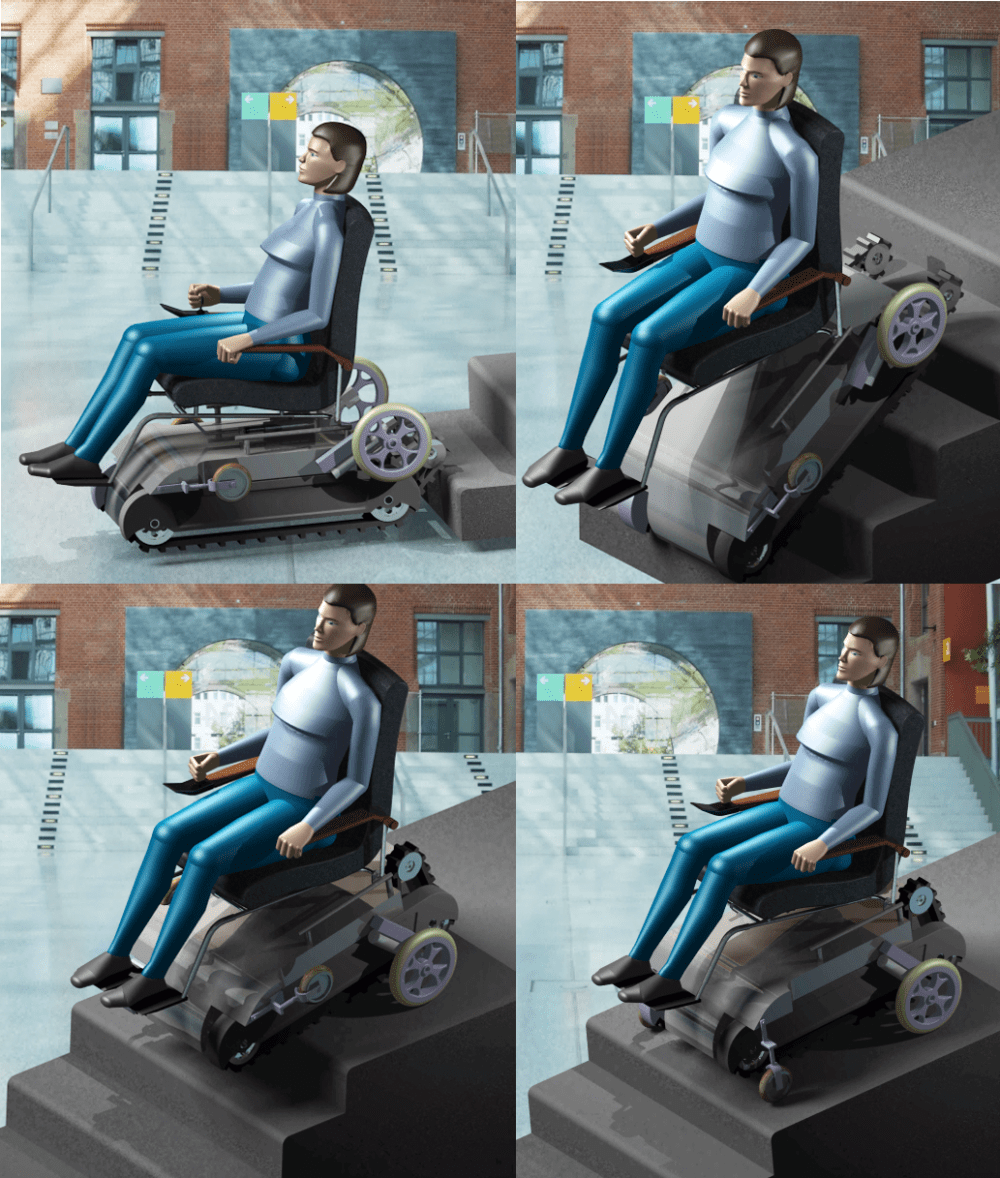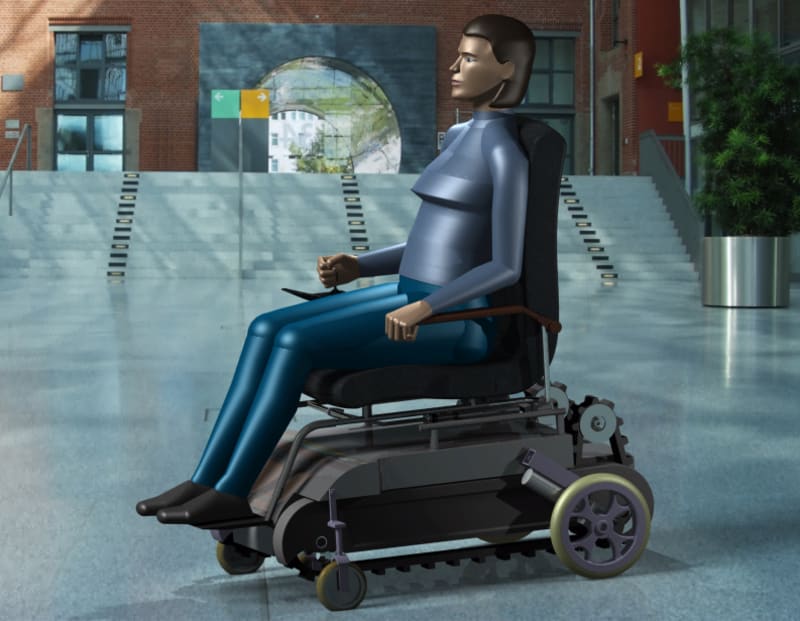
One of the dreams of handicapped people is to regain their mobility. It is sad that for many of them this is an elusive dream.
For many years wheelchairs have helped disabled people to some extent. According to the Wheelchair Foundation, “It is estimated that at least 100 million children, teens and adults worldwide need a wheelchair.” Reports say that 1% of the population of North America is in need of wheelchairs. In several developing countries like Afghanistan this percentage rises to 10% of only the male population.
Unfortunately one of the problems with regular wheelchairs is that they are very limited in mobility. Besides, lots of budget is spent in construction to work out a special wheelchair path. Sometimes it is hard or even impossible to build a wheelchair path for old existing buildings. Thus, regular wheelchairs have problem entering these buildings. A wheelchair that helps handicapped people to go over obstacles, staircases and off-road conditions, independently, is desirable since this wheelchair will result in more freedom of mobility for them, and eventually more satisfaction with their lives.
The advantage of this new wheelchair over other ones of this kind, like spider-wheel wheelchairs, is that it can ascend and descend stairs autonomously and it is more stable and robust over stairs. Also it has a movable track at rear that can be adjusted to different heights of stairs and obstacles, hence more mobility. While moving, even on inclines, using embedded controllers, the seat is forced to stay horizontal to increase safety and comfortability of the passenger and improve stability.
The wheelchair is powered by batteries which are rechargeable. The presence of two mobility platforms (pneumatic tires and tracks) in the same time is to consume much less energy while moving in ordinary even roads and paths using pneumatic tires.
The wheelchair is controlled with the joystick and the 5 buttons on the armrest of the chair. There are 3 buttons to switch among different mobility modes:
1- Road mode in which wheelchair is on tires and acts like a regular motorized wheelchair
2- Track mode in which wheelchair is on the tracks for off road conditions and passing over obstacles. In this mode the rear tracks can be manipulated by 2 up and down buttons.
3- Stair mode in which sensors and controllers help user ascend and descend the stairs. A detailed procedure of this mode is provided in the figures.
This wheelchair is manufactured by assembly of the following main sections:
- Chassis on which all other sections are mounted
- Tracks and their driving system
- Rear power wheels and their driving system
- Idler tires
- Hydraulic actuator and its interface
- Chair
- Joystick and user interface facility
It is approximated that the cost of first prototype lies within 15,000-20,000 USD. However after mass production the final market price approximately will be 50-70% of the prototype price.
This design can also be modified to displace heavy loads in houses, workshops, and factories where stairs are annoying for carrying loads.
-
Awards
-
 2011 Top 10 Most Popular
2011 Top 10 Most Popular
Like this entry?
-
About the Entrant
- Name:Shahram Alipourazadi
- Type of entry:individual
- Software used for this entry:Catia V5
- Patent status:none








